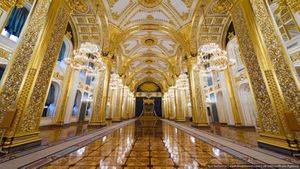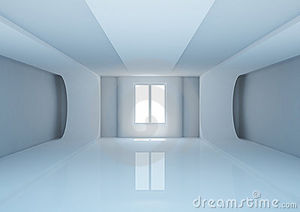Capital punishment in Sayaffallah
This article explains the role of capital punishment/ death penalty within the nation of Sayaffallah and how it has developed over time.
Capital Punishment History
By law the penalty of Capital Punishment or Death is only handed out by the Monarch/Sultan and can only be given for crimes of murder, rape, treason, espionage. The history of capital punishment in the modern sense dates to the period after 1900 when the Constitution of Sayafallah was written by the Parliament, amended with changes by the Sultan and signed both the parliament and the Sultan.
Prior to this capital punishment was handed out by the courts for a long list of penal code offenses and often times done in an arbitrary fashion without hearing extensive testimony from witnesses and those who know the accused. Typically the sentence was handed out by higher courts but there were instances that these sentences were handed out for offences against the religions of the country that violated various religious principles. In the Revolution of 1900 one of the chief complaints of the revolutionaries was that the courts were too closely aligned with religious sentiment rather than being an independent arbiter of justice.
Implementation Process
Local Level =
In Sayaffallah the process for achieving capital punishment begins in the courts at the lower criminal level after a person has been found guilty of a crime that is compatible with the capital punishment designation the prosecution is entitled to make a summary motion to have the trial forwarded to the capital punishment phase. The judge may approve or deny the motion and if denied the prosecution may request an emergency injunction for relief which would require the case to be heard by a panel of 5 judges at the regional criminal level within a week of the case being closed pending a verdict of guilty or not guilty by the court.
Regional Level
At the regional level the judges must weigh the transcripts of the case and may call witnesses at their discretion however they must debate the case within 2 weeks of receiving it and must conclude it no later than the 3 week mark after they received the case with a decision to submit it to the Monarch/Sultan for capital punishment consideration or to deny it and close the case with that disposition. However if a case is denied but has at least 2 judges of the 5 member panel on the dissenting side of a no decision the case must be sent to the national level where a panel of 20 judges will review the case and must achieve a unanimous decision in order to approve it for capital punishment selection by the Sultan.
Sultan Level

Once a case is sent to the Sultan and the Sultan chooses to accept the case into his docket the accused is transported under heavy guard to the Royal Prison of Bellissimomare where they are held for a maximum of a month while awaiting summons. When the Sultan is ready to decide the case the accused is given a shower and a fresh change of clothes and is then taken to the Royal Palace of Sayaffallah and escorted into the Hall of Justice where the Sultan takes his seat on the Throne of Justice. The accused enters and bows twice and kneels in front of the Throne of Justice and is allowed to rise once the Sultan has taken his seat. The Sultan then begins a conversation with the accused to determine the guilt, remorse and cognition of the charges.
The accused may only remain silent for 3 questions, if the accused continues silence beyond the 3rd question it is considered that the accused has neither any remorse nor any regret nor any cognition of the seriousness of the crimes and thus the Sultan leaves the room and once the Sultan is gone the accused is hooded (black hood placed over the head to signify he/she will receive the maximum penalty) and led briskly out of the chambers and loaded onto a transport headed for the place of execution.
However if the accused is cooperative and answers the questions posed to him in a truthful manner, with truthfulness of course being subjective to the interpretation of the Sultan, then the accused will have a chance at redemption. The conversation with the Monarch typically lasts for a maximum of 4 1/2 hours during which time the Sultan will motion for the accused to be led out of the room and at that point the victims family or representatives will be shown the way in and they will be seated in chairs of silver facing the throne to signify that they are free citizens and not in need of the mercy of the Monarch. Once seated the Sultan will try to determine the effect the accused prisoners crime has had on these individuals, the impact on the community and the wishes of the victims family. Typically these moments with the families of the victim are private and have significant weight on the final decision that the Sultan makes.
At the end the Sultan has the family led to a private garden outside the Hall of Justice where they are invited to take solace in their environment around them and the prisoner is led back inside for the verdict to be given. If the verdict is death the Sultan leaves the room first and then the prisoner is hooded and led out to be taken to the place of execution. If the verdict however is capital punishment with redemption the penalty is different and the Sultan leaves the room and the individual is placed in a white hood and led out.
Execution
Black Hood

The Black Hood signifies death and as such the prisoner is stripped of clothing and dressed in an all black prison uniform and a black hood over the head and is driven to the harbor where the prisoner is placed on a boat transport and is taken to a prison ship and from there is loaded onto a helicopter and taken to the Island of Death. The prisoner even under a black hood is given a chance at redemption by surviving a series of tests the first of which involves the prisoner being dropped on the island of death almost immediately where the prisoner will be expected to survive without benefit of provided food or water and must find sources of food and water and methods to survive from the predatory animals on the island. The animals on the island of death range from small pumas to a variety of venomous snakes and highly toxic insects. The prisoner is implanted prior to this with a tracking chip in the left thigh embedded in the intra-muscular level of the prisoner to monitor not just the movements of the prisoner on the island but also the vital signs of the prisoner as well.

If the black hood survives after one year the prisoner is tranquilized by a guard in a helicopter and once rendered unconscious the prisoner is taken by transport to a prison ship where the prisoner is housed for a weeks time while the ship maneuvers into position for the second challenge at redemption. During this time the prisoner is given highly secure medical treatment and is given meals that are designed to both sustain and increase the capacity of a human beings energy and adrenaline drive for survival in the next test.
After a weeks period the black hood is taken by helicopter with the black hood in place over the head of the prisoner and then taken to a highly mountainous island with frequent storms but with an extensive cave system from which to survive and a thriving forest full of snowy leopards and bears that if killed can provide nourishment. The prisoner is provided with a spear for hunting and a net for fishing and is on the island for a period of 5 years and is expected to survive during that time by living off the land. After 5 years time the prisoner is collected off the island and is taken back to Sayaffallah and is given the option of joining the Corps of Prisoners which forms a front line military defence role within the Armed Forces of Sayaffallah. This Corps of Prisoners consists of those given penalties ranging from the capital punishment penalty to those given penalties for other violent crimes or non violent crimes in exchange for parole. If a prisoner refuses to join the military they are placed back on the tropical island from the beginning but placed there for a month and then flown to the mountainous island where they stay for another 5 years time.
On any of these islands there are not any other prisoners on the island at the same time as the use of the death penalty is very infrequent within Sayaffallah as the rate of violent crime punished by death penalty is also very infrequent.
White Hood

The prisoner with the white hood is one that has redeemed themselves in the eyes of the Monarch and thus is not subjected to the same intensity of test as is given to those who are under the black hood. The white hoods are loaded onto a transport and taken to a prison ship where they are then taken down to a prison complex built into the seafloor. The prisoner must remain inside this complex and must complete a daily series of tests, this series of tests is in the following order that tests the intellect, morals, ethics and survival instinct of the prisoner:
- Academic Test (Covering Mathematics, Physics, Literature, The Arts
- Intellectual Test (Covering cognition, memory, spatial recognition
- Moral/Ethics Test (Covering scenarios of morality and ethical response)
- Survival Instinct (Covering situations involving survival under extreme duress)
To prepare for these tests the individual is given the majority of the day in scheduled breaks.
- 5:00am wakeup
- 6:00am-10:00am Library (Can check out books they think might help them in the test)
- 10:00am Breakfast
- 11:00am-2:00pm Gymnasium (Can weight lift, swim or bike to build up resistance and health)
- 2:00pm-3:00pm Instruction by Survival Trainer
- 4:00pm-6:00pm Rest
- 6:00pm-7:00pm Dinner
- 7:00pm-9:00pm Rest
- 9:00pm Test
At 9:00 pm sharp the prisoner is escorted into a room of all white signifying their privilege as a white hood and they are administered the test in the 4 blocks each lasting for 30 minutes.
If the prisoner gets a section wrong (more than 5 questions failed on a section) they are given a random penalty at the end. If the entire test is failed the prisoner is taken and subjected to a 24 hour test where they must survive for 24 hours in a controlled outdoor environment similar to the black hood tropical island.
These tests last for an entire year, after the year period the individual is given a choice of joining the Corps of Prisoner or remaining a prisoner and competing for their freedom by surviving an additional year in their facility but going head to head with other prisoners where the top 10 prisoners who score at the highest percentile are given freedom and their records expunged.
